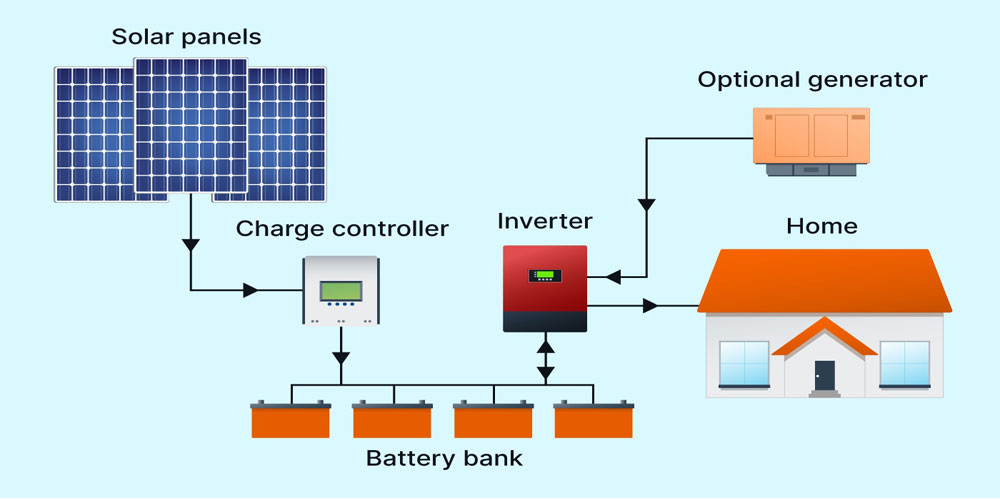
Off Grid Solar System
As the demand for electricity continues to rise alongside increasing prices, the world is turning its attention to renewable energy sources to meet its power requirements. In recent years, solar energy has gained widespread popularity among these renewable options due to its declining costs and enhanced efficiency. A solar system represents a configuration designed to generate electricity by harnessing solar energy. Typically, a solar system comprises key components, including solar panels (which capture sunlight), an inverter (responsible for converting DC into AC), a mounting structure (to secure the panels in place), batteries (for storing excess generated power), a grid connection box, and a balance of systems (comprising wires, nuts, and other essential components).
Solar systems come in various sizes, such as 1 kWh, 2 kWh, 3 kW, 5 kW, 7.5 kW, and 10 kW, catering to diverse energy needs.A solar system which has battery storage and a backup is called an off grid solar system that generates electricity after power cut or during the night hours. It has the four major components, such as solar panels, inverter, battery and balancing of system. This solar system is more popular and comes with a power backup and it works independently of the grid.
They are solar pv system which are not connected to the national grid.
- Completely independent from the grid
- Also called Stand-Alone PV systems
Energy can be Consumed at same time of production or stores in batteries
How Does an Off Drid Solar System Work?
An off-grid solar system comprises four primary components: solar panels, a solar inverter, batteries, and a balance of systems. Solar panels harness sunlight to generate direct current (DC) and store it in batteries. To power DC devices like fans and lights at 12V, a charge controller is required. Conversely, if you intend to operate AC appliances at 220V, an inverter is necessary to convert DC voltage into AC voltage. Modern inverters are designed to operate seamlessly, meaning the electricity generated by the solar system can both charge batteries and power appliances directly. Additionally, in case of a power outage, batteries can directly supply electricity to appliances.The 3-Blocks in every Off-Grid System:
- Production Block: Solar PV Modules
- Storage Block: Charge Controller & Battery Bank
- Usage Block: Solar Inverter & Switchboard
Off-Grid Overview/Components
- PV Modules for energy production
- Battery Bank for energy storage
- Charge Controller for battery protection
- Off-Grid Inverter for Current Conversion
Advantages & Disadvantages
- Off-Grid Systems – Be Your Own Judge of this technology.
- Off-Grid Systems – Be Your Own Judge of this technology.
- The Top Advantages:
- Totally independent from the Power-Grid
- Installed anywhere were energy is needed
- Many applanations
- Big savings in Power-Bills
- The Top DISADVANTAGES
- High costs associated with energy Storage! Batteries represent 70% of total cost.
- Low efficiencies (14%-19%) of PV Modules
Short Battery Lifespan, these need to be replaces at least 4-6 times in the lifetime of the PV system.

